

After finishing up with the winterterm class from the University of Maryland, I started to plan out some of the side trips that I wanted to do while living at Goodenough College. The first one on my list was a day trip to Canterbury to visit the famous cathedral located therein. Canterbury is the historic capital of Kent, the region that comprises the southeastern tip of England. It has also been the center of English religious life for well over a thousand years, drawing centuries of pilgrims to visit the shrines of St. Augustine and Thomas Becket. At a distance of only 90 kilometers / 55 miles from London, Canterbury is easily reachable by train and makes for a great tourist attraction. I would be visiting at the end of January in the least tourist-friendly season of the year. This was one trip where my luck was with me, as I arrived in the middle of a driving snowstorm that carpeted the landscape under a blanket of white poweder. What could be better than this - my very own Canterbury Tale under some of the most picturesque conditions possible!

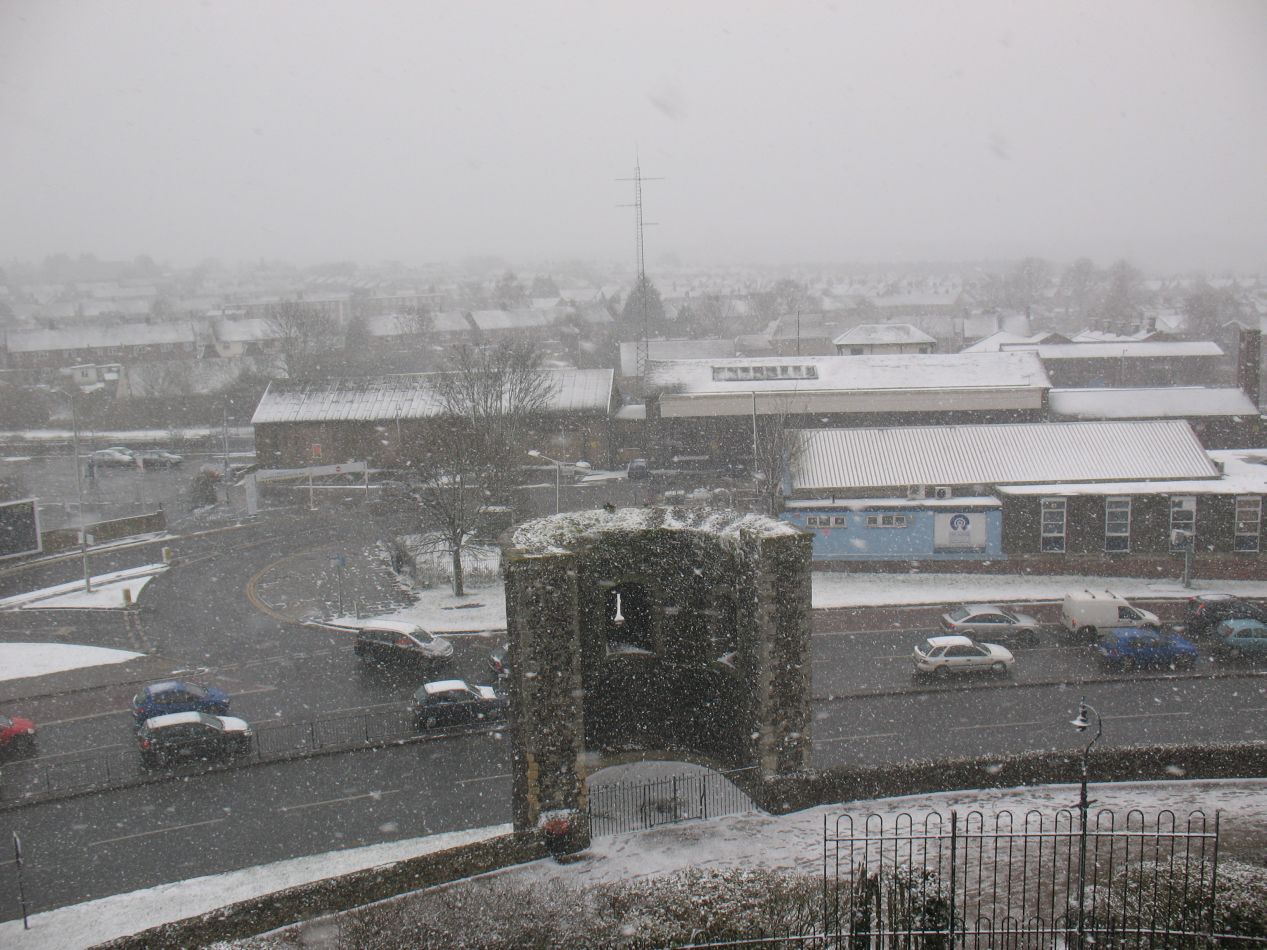


The train from London deposited me at the station at the southern end of Canterbury around noon local time. Canterbury is a small city of roughly 50,000 people, and the historic downtown is compact and highly walkable. I saw the remnants of the old city wall almost immediately, which have their own lengthy history. The first city walls were built by the Romans in the third century, then fell into disuse for long centuries on end before being reconstructed in Norman times. These current city walls were built in the 14th century in response to fears of a potential French invasion during the Hundred Years War, fears that were not unjustified given that the French had invaded the southern coast of England multiple times previously in the medieval period. Many of the walls were knocked down as the city of Canterbury grew in the 18th and 19th centuries, and about half of the medieval walls still survive down to the present day. From the outer walls I walked up the main tourist drive on Castle Street, where the businesses were mostly shut down due to the wintry conditions. Eventually I reached the main entrance to the cathedral grounds at Christchurch Gate, a beautiful archway that dates back to the early 16th century. It was only slightly spoiled by the presence of a Starbacks in the building next door.

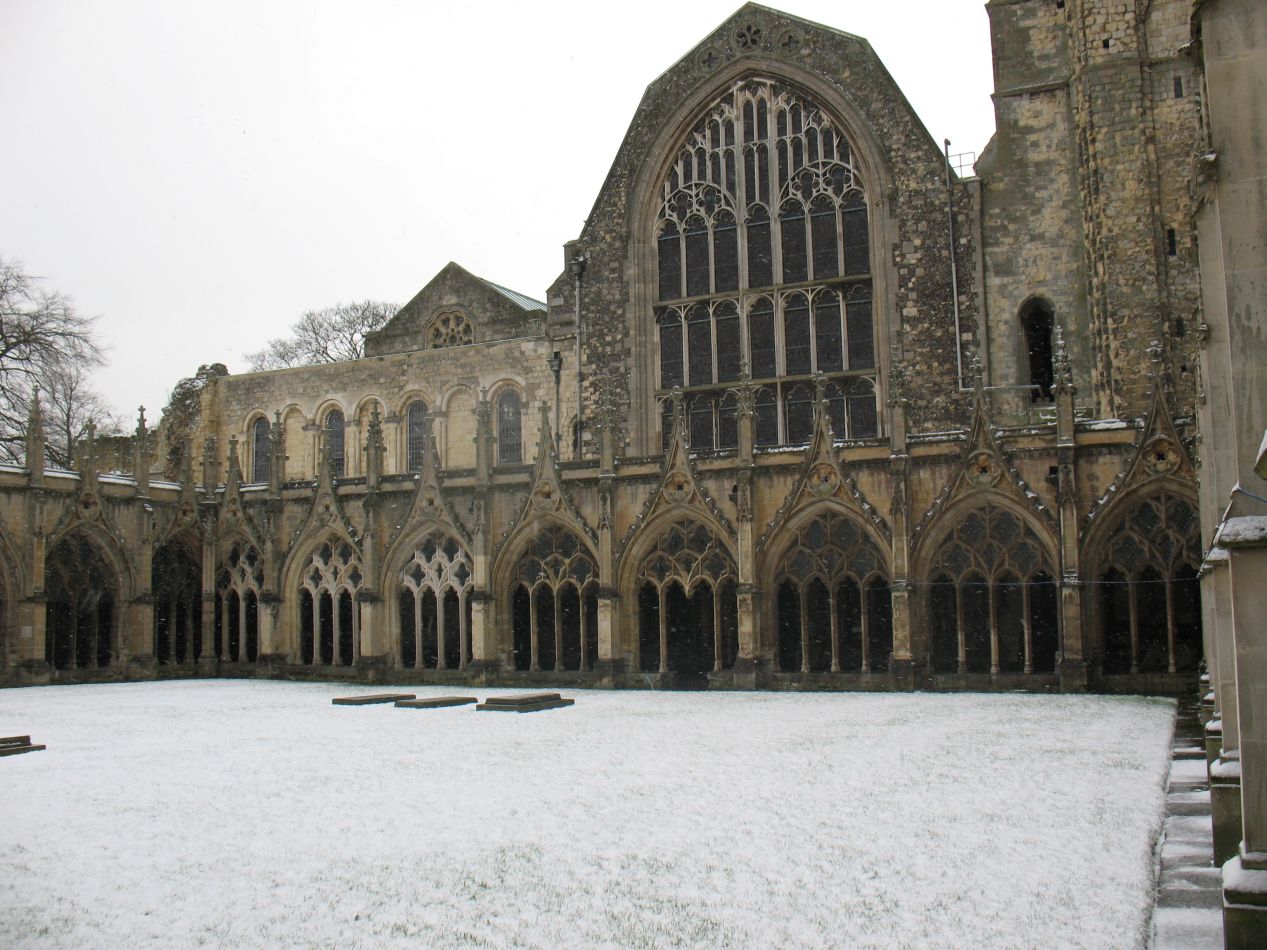


When I passed through the gate, I was greeted by the same sight that generations of pilgrims have experienced: Canterbury Cathedral. This grand cathedral serves as the headquarters for the Church of England and has been the spiritual centerpiece of English faith for the last thousand years. The original church at Canterbury dates back to the Anglo-Saxon period, when St. Augustine of Canterbury (not the more famous St. Augustine of Hippo) arrived in Britain in 596 as a missionary to convert the pagan inhabitants. This was necessary since the people of Roman Britain had earlier converted to Christianity, only to see the region revert back to paganism in the wake of the Germanic arrivals in the 5th century. St. Augustine's initial church was destroyed by fire and rebuilt repeatedly over the centuries, with the current enormous building dating mostly to the 12th and 13th centuries. The snow continued to swirl around me as I took an initial walk around the exterior of the cathedral, marveling at the size of the place. This is both one of the largest and oldest cathedrals in England.

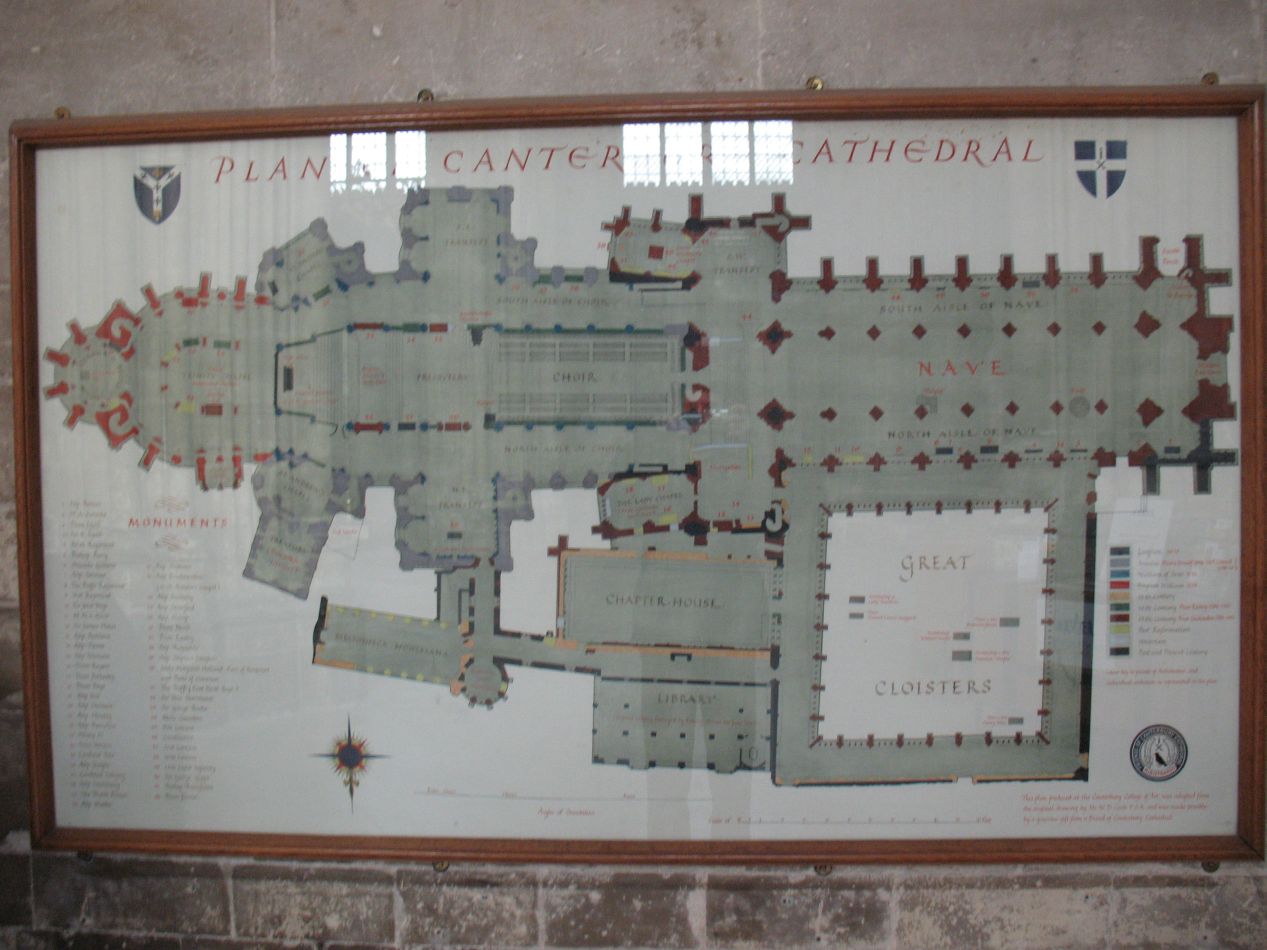


Canterbury Cathedral was designed in the Gothic architectural style. While I'd seen plenty of other Gothic cathedrals before, Canterbury was one of the places that served as a touchstone for the design, a model that was endlessly copied and imitated elsewhere. The common Gothic stylistic elements were all present here: high ceilings held up by a double row of stone pillars on the interior, arching stone vault overhead, and colorful stained glass windows high up along the walls to let in outside light. Canterbury Cathedral has some unique features of its own though, such as a double cruciform design (two horizontal sections instead of the standard one) as well as a cloister and chapter house attached to the side of the building. This was a remnant of the cathedral's days as a monastery before Henry VIII dissolved them during the Protestant Reformation. I continue to be annoyed that many of these interior photos didn't turn out very well and therefore failed to capture the beauty of the structure. Some of the upcoming ones turned out a bit better.

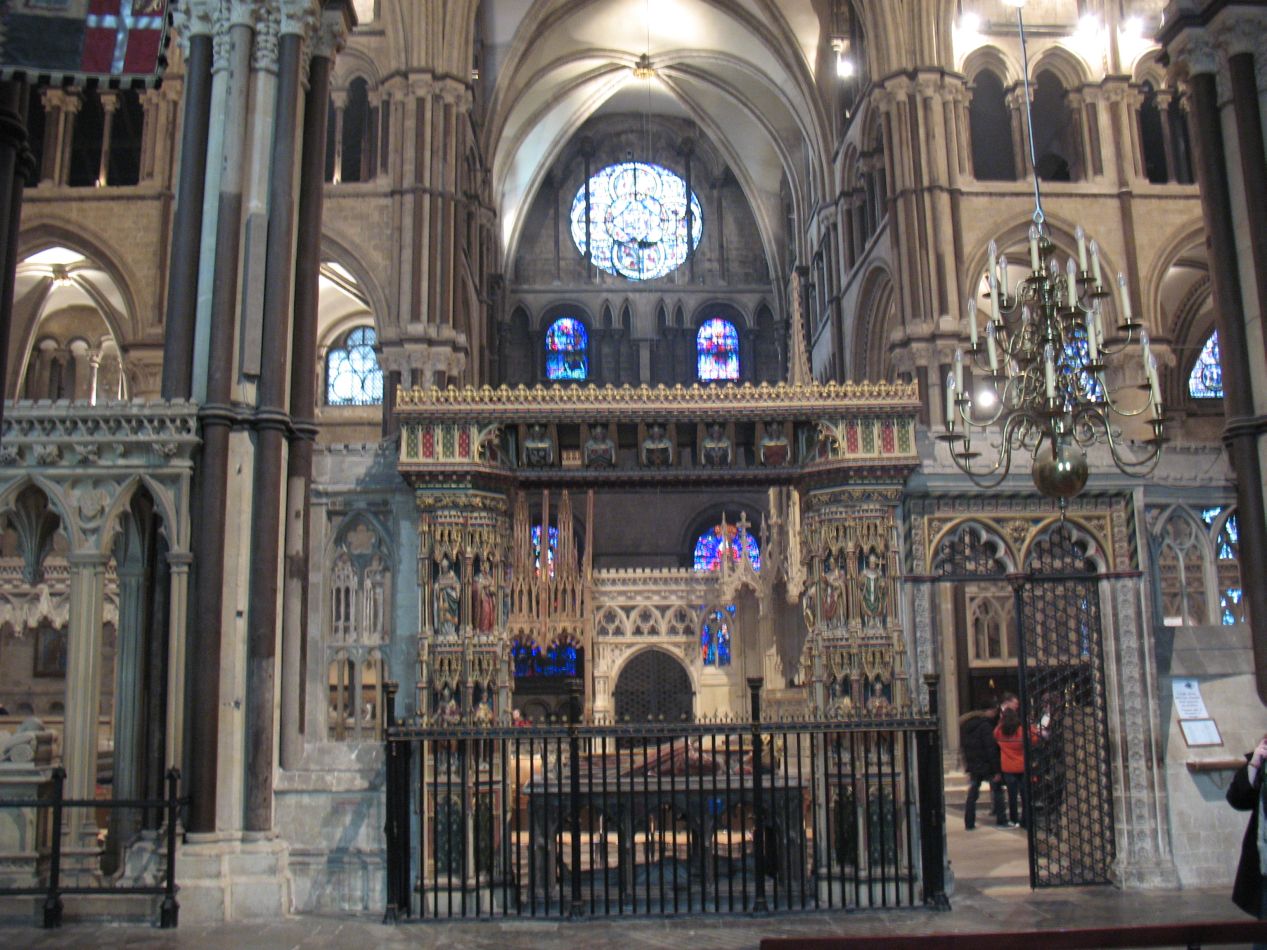


My favorite part of the cathedral was the choir portion, which was located in the center of the building about two thirds of the way up from the entrance. This is where the cathedral's famous youth choir performs, and the natural acoustics from being in such a large enclosed space are amazing. The choir was in the process of rehearsing when I visited the cathedral and I heard their director leading them repeatedly through a particularly difficult section until he felt that they had gotten it correct. The visuals here were just gorgeous, as I could look to the west back towards the nave and the entrance, or to the east as it sloped up to higher ground where the small Trinity Chapel was located. This was where the deeply religious knight Edward Plantagenet, the "Black Prince", was buried in a small tomb off to the side of where the choir was rehearsing. The Black Prince was the heir to the English throne but died before his father Edward III and therefore is known to history by his title of prince. It was a stunning place to be buried even if the sight of his tomb next to the young choirboys was a bit odd.

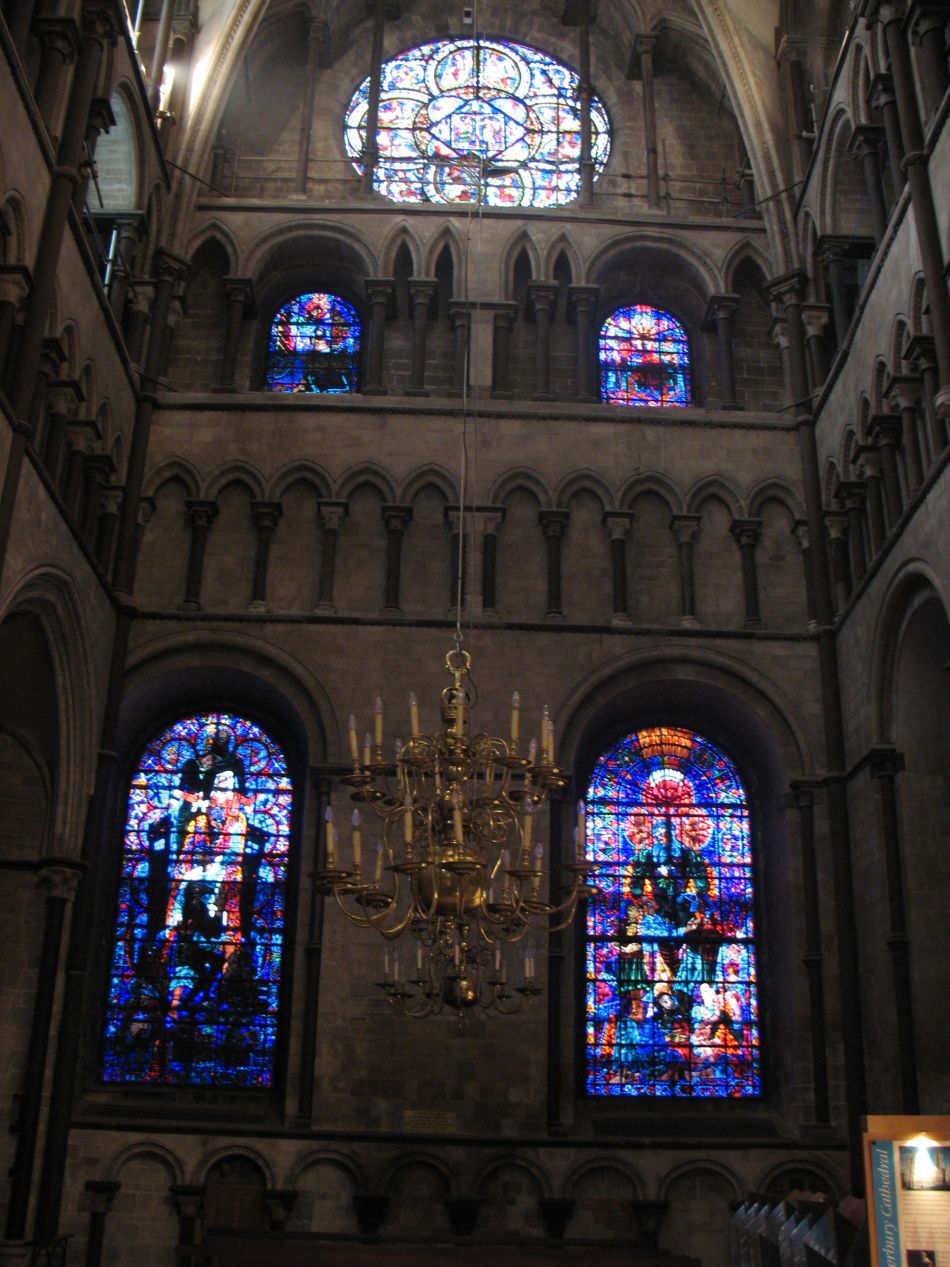


Having walked to the end of the cathedral along its central axis, I headed back the other way through the side passages along the walls. I managed to capture an image here of the light streaming in through the tall stained glass windows, despite the snow continuing to fall outside, and it looked like some kind of heavenly glow illuminating the ancient stone pillars. There were a number of places of interest in the side transepts, including the shrine to Thomas Becket at the location where he was murdered in 1170. Becket was the archbishop of Canterbury and had been a significant opponent of King Henry II, which led a group of zealous knights (who may or may not have been acting on orders from the king) to set upon him and kill him inside the cathedral. Becket's shrine in Canterbury Cathedral only raised the profile of the church to a higher degree, and the desire of pilgrims to travel to this spot forms the backdrop for Chaucer's Canterbury Tales. I was a bit disappointed by this shrine, as I found the sculpture of the daggers and the weird knife-like font used to spell out the word "Thomas" to be a bit off-putting. Out of all of the different ways to venerate a murdered saint, this was the one that they chose? I haven't even mentioned the small regimental chapel dedicated to the Royal East Kent Regiment, "The Buffs", which have been in service since 1572. The faded color of their flags spoke to centuries of military service in duty to the crown.

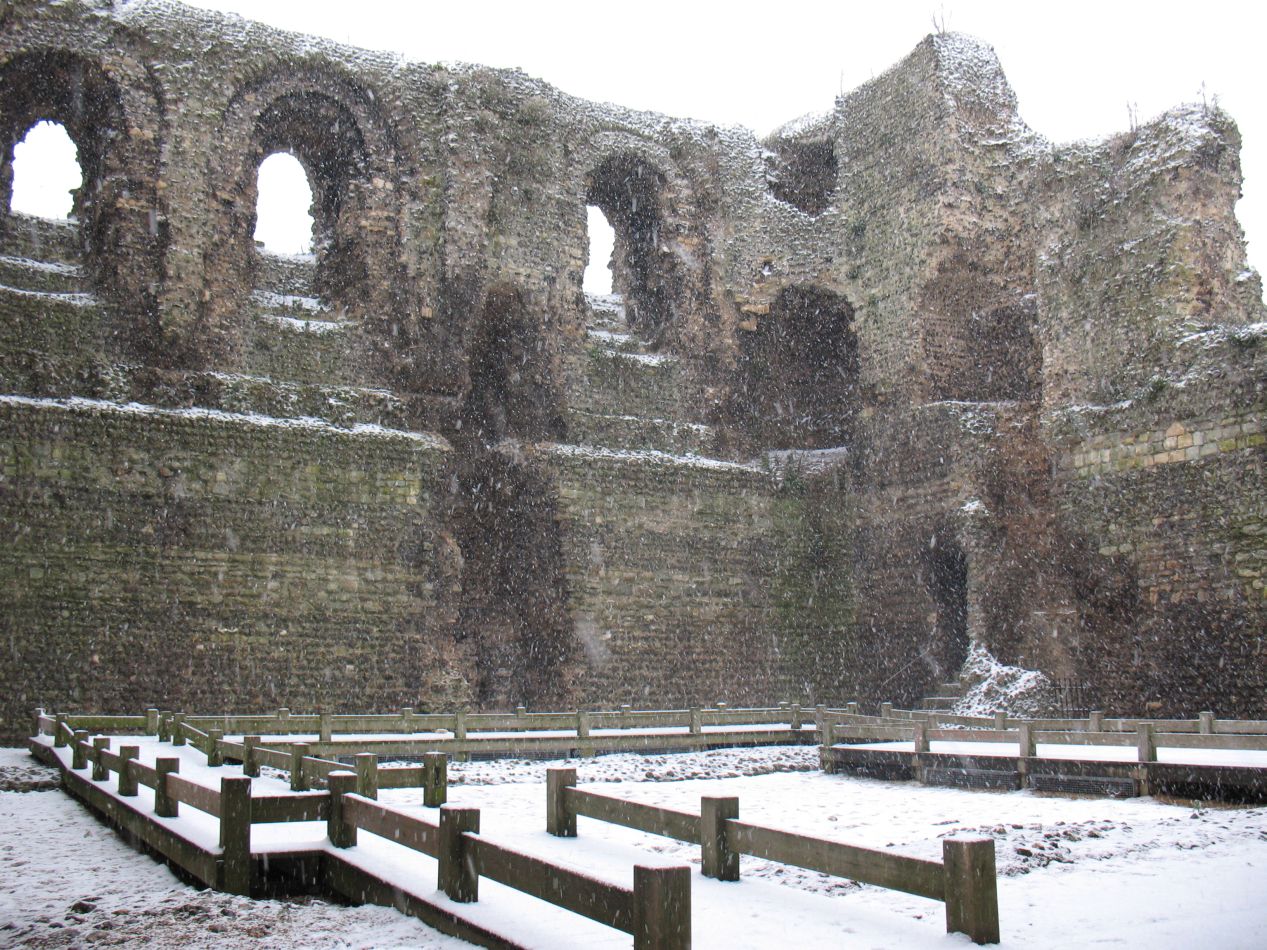


If anything, it was snowing even harder when I left the cathedral and headed back through Canterbury town. I didn't have a map of the area, but I'd seen signs for something called Canterbury Castle and wanted to see what that entailed. I passed by a smaller stone church named St. Mildred's and soon reached the castle itself. Or at least the ruins of Canterbury Castle, as there wasn't much remaining of the place. The castle dated all the way back to Norman times when it was built in the early 12th century to safeguard the important Roman road from Dover to London. At one point this massive stone building would have stood as much as 80 feet / 25 meters tall and dominated the local landscape along with the cathedral. The castle was used as a prison for long periods of time before being purchased by a gas company in the 19th century, when it was used for gas storage and suffered considerable damage. Argh, where was the historic preservation back then! The building is an open-air shell of its former self today, and it seemed to be haunted by the ghosts of the past when I visited amidst the snow. Those empty window frames looked all too much like eyes, and this place was downright spooky in its deserted space.
I didn't want to stay too long in Canterbury because the continued snowfall would make travel more and more difficult as the day wound on. As it was, my train ride back to London took almost three hours in comparison to the one hour trip on the outbound route. It made it though, and that was the goal. I did not want to have to sleep at the train station or find some kind of local lodgings. The snow accumulated all night and it turned out that we had a genuine blizzard on our hands, the sort of snowfall that London rarely experiences as a city.

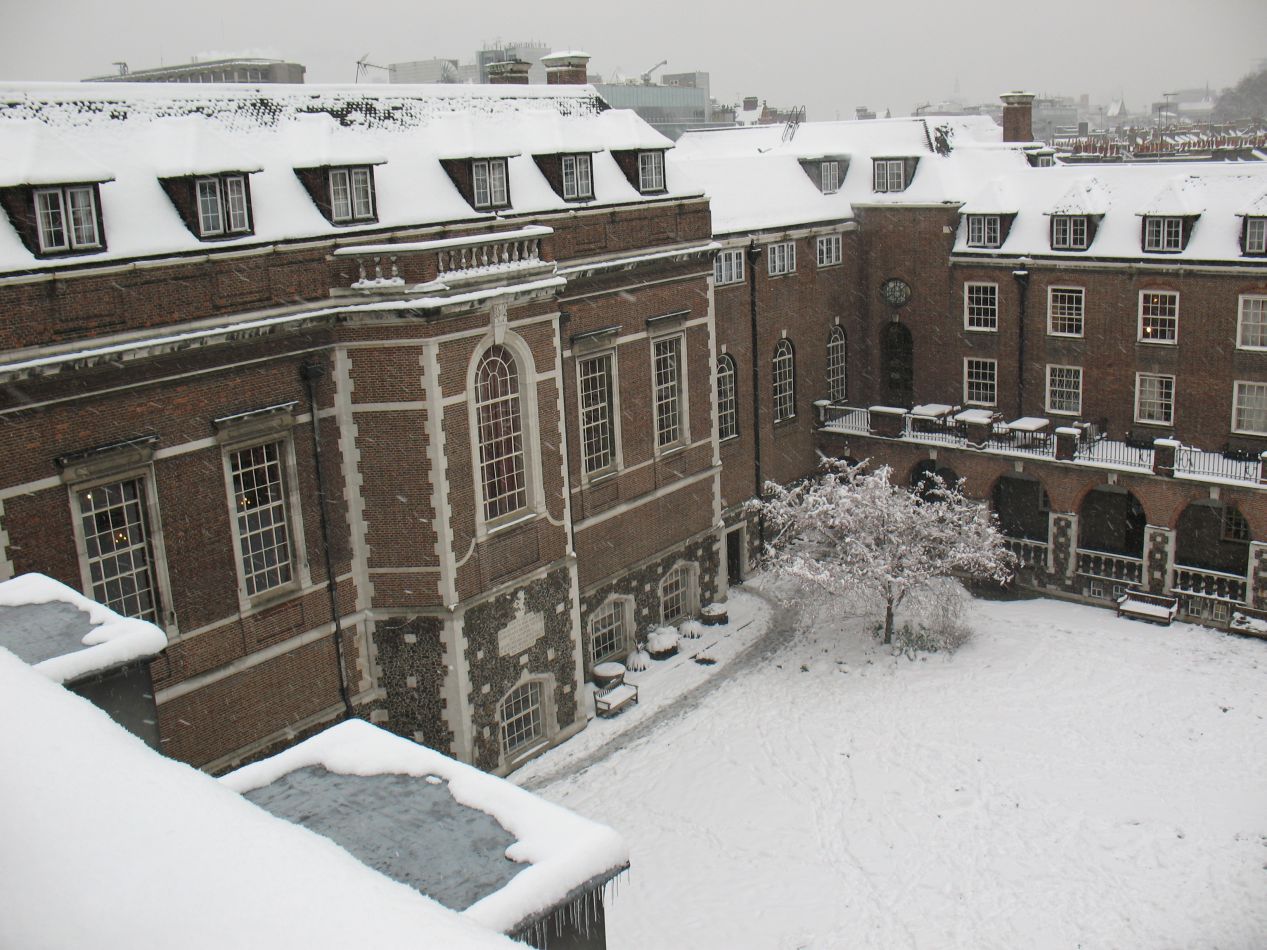


This was a rare opportunity indeed and I was determined to make the most of it. I bundled up against the cold as best I could and set out to spend a few hours capturing the sights and sounds of London during this snowstorm. I started out by taking some pictures of Goodenough College, which had been blanketed under roughly six inches / fifteen centimeters of snowball. The greenery in the courtyard had been replaced by a layer of soft white, and if this wasn't enough accumulation to be a true winter storm, it was still quite pretty indeed. Compare back to the images of Goodenough College on the previous page to get a sense for how the snowfall had transformed my normal living area.




I planned to do a circuit of the major sights in downtown Westminster to capture them during the London blizzard. I started out by walking from Goodenough's location near the Russell Square underground station to the monuments in Trafalgar Square. Yes, walking - I wasn't going to take a risk on the tube with the weather being what it was. Trafalgar Square looked downright festive with the snowfall, the statues wearing a thin coating of white and the fountains once again frozen over. There were few cars on the streets and it felt a bit like being thrown back in time, as if this were a Dickens novel or something. I walked a little bit down Whitehall and then turned to the right to pass onto the Horse Guards parade ground. There were no horses here today, only a open courtyard covered in snow with pedestrian foottracks running through it in every direction.

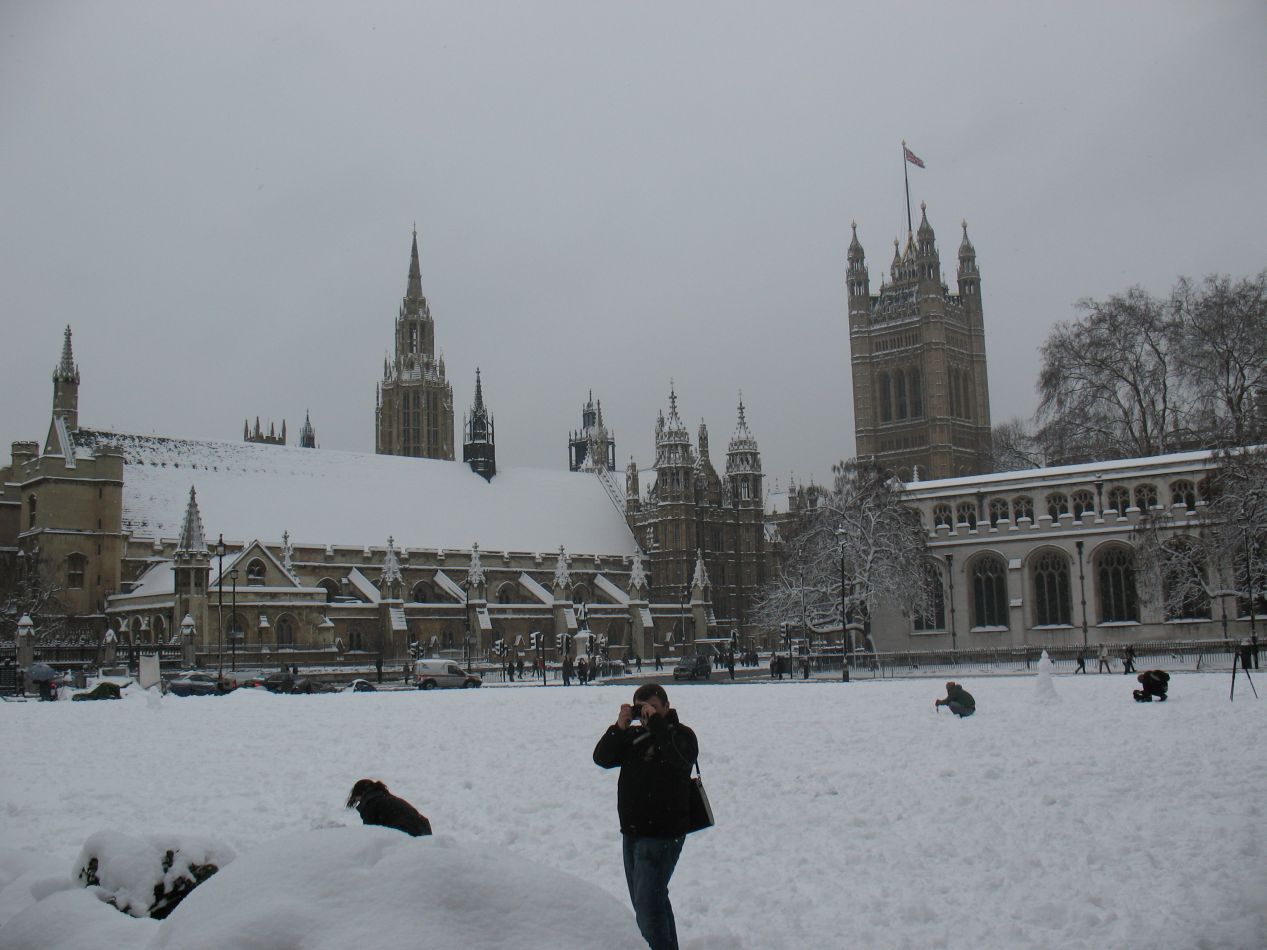


Eventually I reached my destination, the famous buildings at Westminster circling around Parliament Square Garden. There was the huge Parliament building itself, for once with no protesters standing outside the gates, flanked on the other side of the street by Westminster Abbey. I was disappointed to find that the cathedral was closed for the day, yet another incident in my long string of visiting the Abbey and finding it closed to the public. (I've been able to tour the inside exactly once, in 2007, despite visiting the building four different times.) Parliament Square was truly photogenic on this day and looked like something out of a Christmas postcard. Also, what kind of bird was that in St. James Park? Was that a pelican? Surely those were not the type of birds used to living under blizzard conditions!

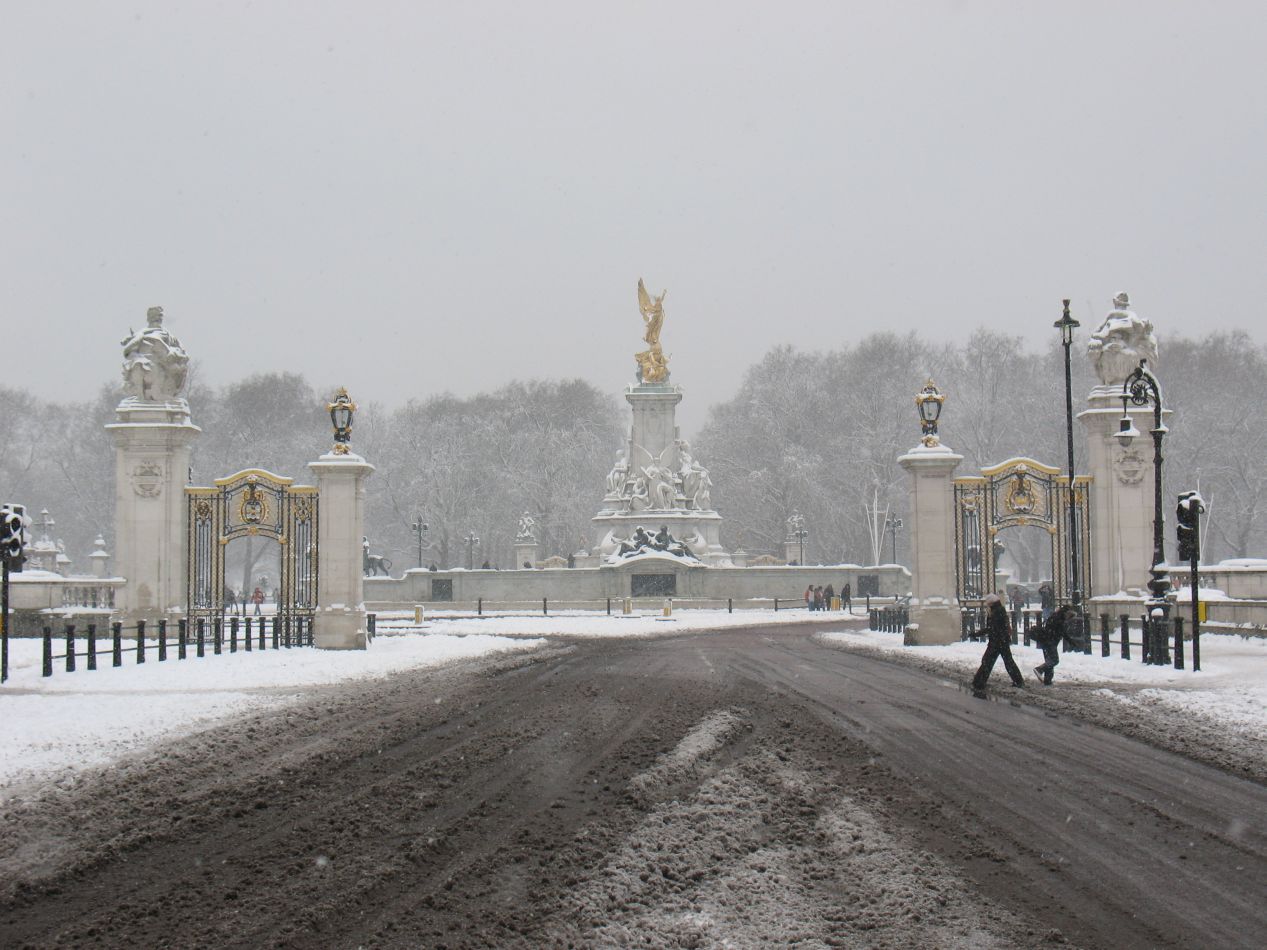


I wrapped things up by walking through St. James Park to the royal palace at the end of the lake. The snow accumulation was heavier in the park and it almost felt like being out in the woods somewhere despite the urban environment. The sight of the Queen Victoria statue outside the palace was ruined somewhat by the muddy gray slush of the roadway surrounding it, an inevitable side effect of needing to keep the roads open to traffic. Buckingham Palace itself stood tall and serene against the blizzard outside, seemingly unconcerned by the effects of the winter weather. There were more people here than the other places I'd visited on the day, if still well short of the normal throngs of tourists. A good number of London residents were enjoying the uncharacteristic snowfall by building snowmen and having snowball fights in the park. This was the time to do it before the snow all melted away.
It was a long, cold walk back from Buckingham Palace to Goodenough College and I was thoroughly tired by the time that I returned. I was exceedingly happy that I had made the effort, however, as this was truly a once-in-a-lifetime opportunity that would never come again. The odds that I would ever be in London again during a major snowstorm were virtually zero, and it was an amazing experience to be able to see some of the famous monuments under a dusting of white powder. The fact that I had been fortunate enough to visit Canterbury Cathedral under the same conditions was insanely lucky. This was one of those points in time where my travel luck had been running white hot. I wish that I could tell you that the rest of my time in London had been as fortunate as this!
The next page concludes this study abroad trip with one of my longer excursions while staying in Britain, an overnight trip to Edinburgh in Scotland.



